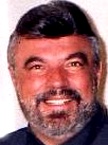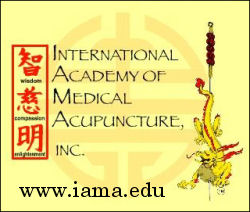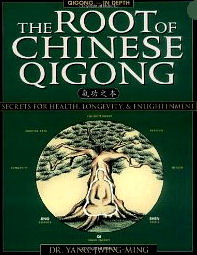Acupuncture & TCM Articles

Acupuncture Articles
by John A. Amaro L.Ac., Dipl.Ac.(NCCAOM), DC
 Dr. Amaro is an internationally known author, lecturer and practitioner beginning his practice of Acupuncture and Chiropractic in 1971. He has led 13 diplomatic Acupuncture study tours of The People's Republic of China escorting more than 500 doctors and practitioners. He has personally studied Acupuncture in nine separate Asian nations. Dr. Amaro is an internationally known author, lecturer and practitioner beginning his practice of Acupuncture and Chiropractic in 1971. He has led 13 diplomatic Acupuncture study tours of The People's Republic of China escorting more than 500 doctors and practitioners. He has personally studied Acupuncture in nine separate Asian nations.
He has received Certification in Acupuncture through the Columbia Institute of Chiropractic in 1973. This was one of the first Acupuncture postgraduate education programs for physicians in North America commencing in 1972.
He has been certified by the Waseda Acupuncture College in Tokyo, Japan in 1974 and graduated from the Chinese Medical Institute, Kowloon, China in 1976. He had previously taken postgraduate studies at the Tai Chung Medical School Taipei, China 1973.
The Mysteries of Chinese Qigong
John A. Amaro L.Ac., Dipl.Ac.(NCCAOM), DC
In my 12 trips to the Orient, I have been amazed, mesmerized, and intrigued to the point I feel nothing could shock me. But every time I return, I seem to encounter strange and mysterious procedures.
The thing which fascinates me the most is undoubtedly "qigong." A qigong master in Zhejiang province had two motorcycles tied to his arms, legs, and around his head. The motorcycles were directed to speed off in five different directions but were unable to sway the slightly built master off of center. The force emitted by the power of the motorcycles would have normally dislocated or traumatically amputated limbs, not to mention decapitation.
Qigong master Hou Shuying broke an iron bar in two while members of the Institute of Mechanics, Chinese Academy of Sciences observed. It was estimated a force of 1,500 kg was necessary to break the bar.
The physicians I escort each year to Asia have witnessed incredible feats. We observed a qigong master hold a fluorescent light bulb in his bare hands and light the bulb with just his emitted "qi" energy.
During one of our banquets a qigong master asked one of our doctors to hold his open palm in front of him. With emitted "qi" from the master's index finger, he created an area of hyperthermia on the doctor's palm which was visible as a red spot and could be felt by the subject and those examining him. This was observed by at least a dozen American doctors.
I have scores of photos in my China albums, as does virtually anyone who has ever accompanied me on a trip to Asia, of synchronized motion through qigong. In this procedure a qigong master, after emitting qi energy to relax the subject, proceeds to make the subject lean far in several directions: to the point where the observer feels it is impossible for the subject to remain on their feet, being that far off their center of gravity. This is all done from a distance of six to eight feet away from the subject and making the person lean in whatever direction the master's outstretched hands are pointing. This is also done with the qigong master standing behind the subject and out of view.
The Root of Chinese Qigong
 
In other examples of synchronized motion, a paralyzed patient will lie on a table with the qigong master out of the patient's sight. Standing at a distance, the master will raise his hand in a particular direction and the limbs, or entire body, will raise in a puppet-like fashion, as if there were strings attached to the body and extremities.
China today has close to 40 qigong research institutions, 10 different qigong journals, and virtually millions of people who practice the 20 most popular exercises of the 396 that have been published.
Qigong is either "hard" (kung fu) or "soft" (health preventive or therapeutic). Qigong can also be static (whereby the practitioner has the appearance of standing still), or dynamic (where exercises and movement are practiced). "Emitting qigong" is the type which refers to the abilities of the practitioner to emit qi to another person or object for the purpose of healing energy, or to counter an opponent in martial arts.
Acupoint pressure therapy or emitting qi without touching the patient by directing qi toward the acupoint is a practice which masters routinely use in the treatment of disease. Scientific researchers studying emitted qi by masters have measured with scientific instrumentation that infrared electromagnetic waves, static electric charges, and subaudible sound waves are discharged from the hands of those masters emitting qi.
In one particular study which focused on qigong master Dr. Huang Xiaokuan, qigong acupoint pressure was applied in 40 cases with an effective rate of 95 percent.
Practicing qigong does not need any particular condition or equipment, and there are virtually no limitations on who can perform it. Through conscious regulation of respiration, thought and movement it relaxes the body and mind and regulates circulation of qi and blood, improves the metabolism and develops the potentialities of the body.
Qigong is composed of three key elements: relaxation; direction of qi by will; and movement of the body. While practicing qigong the mind should be calmed. The entire body, head to the toes, is verbally directed to become relaxed, following deep breathing with full inhalation and exhalation. This should ideally be done in an environmentally conducive atmosphere. Only when the mind and body are relaxed can there be proper dilation of the blood vessels which facilitates the circulation of qi and blood. Relaxation is a definite prerequisite for directing the flow of qi by the will.
Direction of qi by the will is perhaps the most fundamental aspect of qigong. This is the direction and concentration of energy through the body of the practitioner. Energy should be focused at Dantien [CV 6] (just below the navel), or at Yongquan [KI 1] (center of the sole of the foot) prior to emitting qi from the hands and eyes. This gives emitted qi power.
All of us practice various forms of qigong on our patients daily, most often without us even being aware of it. Unfortunately, it is probably safe to assume most of it is of negative influence rather than positive. Remember, what affects us emotionally, physically and spiritually throughout the day is what we are pouring into our patients every time we touch them.
A practitioner should without question take several deep breaths and focus their attention on the patient they are about to see and treat that patient with single mindedness of purpose before they make any contact with them, even if it is at a distance.
Qigong energy is extremely powerful. If it is harnessed with positive expectations and delivered with purity and positive thoughts, it will work miracles.
| 